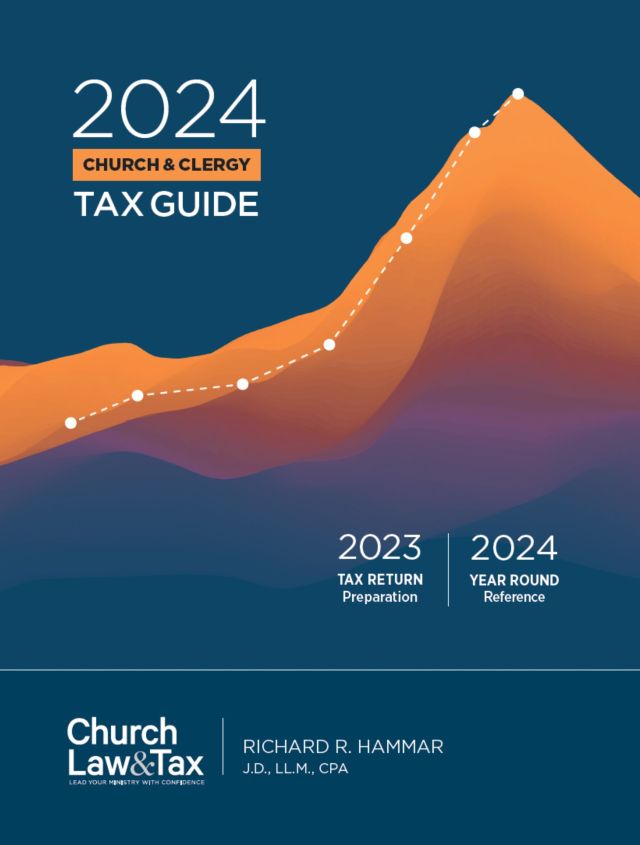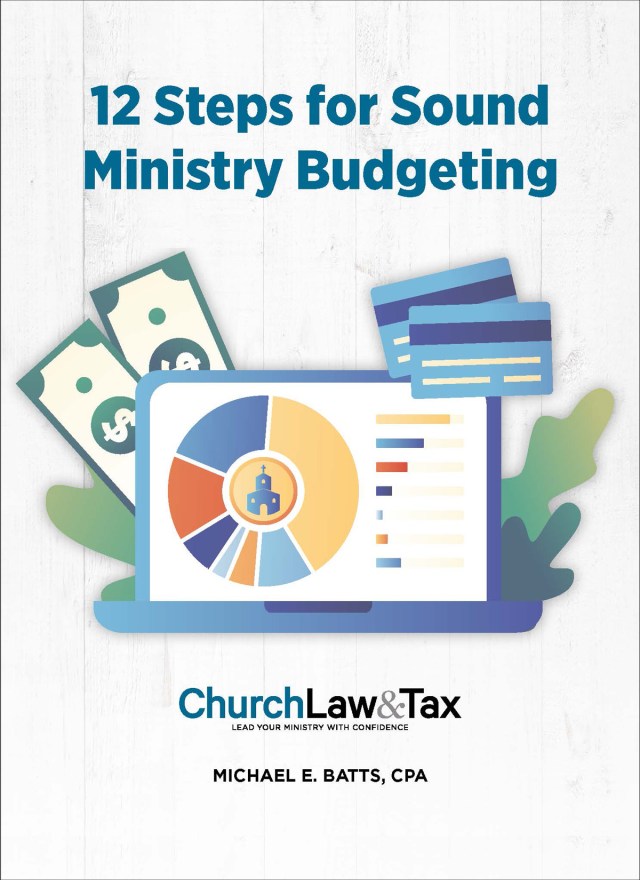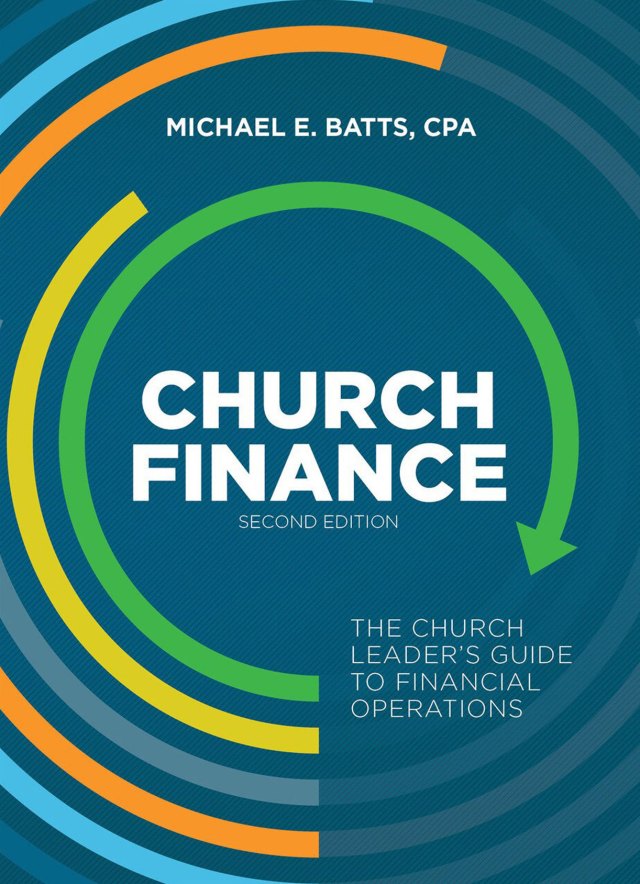Even though the generally accepted accounting principles (GAAP) framework is formally and officially recognized by the accounting profession, use of the GAAP framework for external financial reporting is not generally a requirement of the law outside the context of regulated and publicly traded companies. However, the use of GAAP for external financial reporting purposes may be required as a contractual or legal condition for churches and other nonprofit organizations in certain circumstances. For example, a bank or other lender may require a church to apply the GAAP framework to financial statements submitted to the lender on an annual basis. Similarly, a government agency or other grant-funding organization may require a church to submit GAAP-basis financial statements as a condition of receiving a grant. Regardless of whether such a contractual or legal condition applies, a church may still voluntarily choose to use the GAAP framework for its external financial reporting.
In the following article, CPA Michael Lee offers helpful and timely insights into the newly updated changes in GAAP.
If your church produces external financial statements following generally accepted accounting principles (GAAP), you are probably aware that the biggest change in nonprofit financial reporting in the last 20 years is upon us. Accounting Standards Update 2016-14, Presentation of Financial Statements of Not-for-Profit Entities (ASU), was issued by the Financial Accounting Standards Board (FASB) in 2016 and is effective for annual financial statements issued for fiscal years beginning after December 15, 2017 (i.e., calendar years ending December 31, 2018, and non-calendar or fiscal years ending in 2019).
The ASU is intended to improve, but not overhaul, the financial reporting model for nonprofit organizations. This article provides an overview of the ASU’s key elements of change and contains a more in-depth discussion about the new required disclosures regarding liquidity and availability of resources.
Five key changes
Here is a brief summary of the five most significant changes required by the ASU:
- Classifications of net assets
Organizations will present amounts for two classes of net assets rather than the currently required three classes. The two classes are (1) net assets without donor restrictions and (2) net assets with donor restrictions. Enhanced disclosures regarding governing board designations and similar actions that result in self‐imposed limits on the use of resources without donor‐imposed restrictions (if applicable) will also be required. Specifically, the amount, purpose, and type of board designations will be disclosed (e.g., capital replacement reserve, debt retirement reserve, contingency reserve). - Reporting investment return
Organizations will now present investment return net of related investment expenses (including both external and direct internal investment expenses) on the statement of activities. Organizations will no longer be required to disclose gross investment income and related expenses in the footnotes. - Reporting of expenses
All organizations will present expenses by both their natural classification (e.g., salaries, rent, utilities) and functional classification (program services and supporting activities). The analysis of expenses will be provided in one location, which could be on the face of the statement of activities, as a separate statement, or in the notes to the financial statements. In addition, methods used to allocate costs among program and support functions will be disclosed. - Disclosures regarding liquidity and availability of resources
Organizations will disclose qualitative information in the footnotes that communicates how it manages liquid resources available to meet cash needs for general expenditures within one year of the date of the statement of financial position. Organizations will also include quantitative information that communicates the availability of financial assets at the date of the statement of financial position to meet cash needs for general expenditures within one year of the date of the statement of financial position. See additional discussion below. - Reporting of operating cash flows
Organizations that follow the direct method of reporting operating cash flows in the statement of cash flows will no longer be required to present or disclose the indirect method of reporting operating cash flows (this information will be optional). - The new disclosures regarding liquidity and availability of resources
- Of all the ASU’s requirements, the new disclosures regarding liquidity and availability of resources are garnering the most attention. This is with good reason. At the very heart of an organization’s long-term viability and sustainability is liquidity. “Liquidity” in this sense refers to an organization’s ability to use its financial assets to meet its financial obligations. Readers of nonprofit financial statements, including donors, board members, creditors, and others, often express frustration over their inability to assess the true overall liquidity of an organization based on the previous GAAP presentation model, primarily because an organization was not required to shine a light on this aspect of its financial condition. These stakeholders want to know that an organization has sufficient liquid resources to meet financial obligations as they come due. The ASU provides a higher level of transparency.
- There are two key elements of the new disclosure requirements: qualitative disclosures and quantitative disclosures. The qualitative disclosures provide readers with information about how the organization manages liquidity and how resources are used in carrying out the organization’s mission and purpose. The quantitative disclosures provide readers with information about the effects of external and internal limits on the use of available resources (such as donor restrictions, lending requirements, and internal board designations) to meet cash needs for general expenditures within one year of the date of the financial statements.
- It is important to note that these are not forward-looking disclosures. The purpose of external financial statements is not to “predict the future.” Rather, the disclosures should be based on conditions that exist as of the date of the financial statements.
- An example of a quantitative disclosure and qualitative disclosure follows:
- Note [X]: Liquidity and Availability of Resources
- The following reflects [name of church] financial assets as of the statement of financial position date, reduced by amounts not available for general use within one year of the statement of financial position date because of contractual or donor-imposed restrictions.
-
Financial Assets (e.g., cash, investments, and short-term receivables) $21,000,000 Less those funds unavailable for general expenditures due to: Restricted by donor with time and purpose restrictions ($2,000,000) Restricted by donor with perpetual restrictions ($6,000,000) Designated by board for capital reserves ($8,000,000) Financial assets available to meet cash needs within one year $5,000,000 - The [name of church] manages its liquid resources by employing a variety of measures. The [name of church] focuses on generating adequate contributions to cover the costs of its activities. In addition, the [name of church] invests excess cash in investments to maximize return, taking into consideration the [name of church] low tolerance for investment market risk. The [name of church] also monitors costs closely. As discussed in Note Y, the [name of church] has available a revolving line of credit with a balance up to $2 million in the event of an unanticipated liquidity need. The [name of church] did not use the line of credit during 2018.
- Judgement should be exercised when preparing the liquidity and availability disclosures. For example, your church may receive donor-restricted contributions for one or more of the church’s ongoing and budgeted programs which will be carried out without regard to contributions restricted to that program. Should these types of donor restrictions reduce the church’s financial assets available to meet cash needs within one year? Maybe or maybe not. The ASU does not define the term “general expenditure,” so it is subject to interpretation. Differences of opinion will likely exist with regard to questions like this one, and time will tell how most organizations choose to handle such matters. We recommend that churches consider disclosing their policy regarding what constitutes general expenditures, as well as adding clarifying language where it would be helpful with respect to any other elements of the liquidity disclosures. The qualitative disclosures present an excellent opportunity to communicate helpful information to the reader.
- As is often the case, the FASB does not mandate a particular format or layout for the required disclosures. In fact, the ASU itself contains a variety of examples, each of which meets the ASU’s requirements.
- Next steps
- Church leaders not only want their churches’ financial statements to be accurate, they also want to ensure that the required disclosures fairly present the church’s financial information without unintended adverse consequences. Planning ahead can help make sure these bases are covered. Here are some next steps to consider as you develop or refine your plan to address these new requirements:
- Meet with your auditor to ensure there is a clear and thorough plan to incorporate the disclosures in the financial statements. Your CPA firm may have helpful ideas regarding the content of your church’s disclosures.
- Prepare a working draft of the required disclosures and discuss it with the church’s other key leaders, including the board or finance committee as appropriate.
- Make a preliminary determination about whether the church should take proactive steps to manage the information contained in the disclosures. For example, you may decide that the financial assets available to meet general expenditures is “too thin.” Consider implementing appropriate measures to maintain higher cash balances at year-end. Give thought to developing language for the qualitative disclosure to help the reader better understand your church’s financial story.
- A final word
- Some church leaders are concerned that the ASU will add a substantial burden to both the internal financial team and the external auditors. Except for very unusual circumstances, that should not be the case. It is true that some additional work will be required for both the internal financial team and the external auditors. However, with proper planning, developing the newly required information should not be a highly burdensome process. And external auditors well versed in this area should be able to assist churches significantly by suggesting formatting for the financial statements and proposing content for the newly required disclosures.
- The introduction to this article is adapted from Church Finance by Michael E. Batts.
- Michael M. Lee is a partner and the national director of audit and assurance services for Batts Morrison Wales & Lee, a CPA firm exclusively serving churches, ministries, and other nonprofit organizations and their leaders. For more information, visit nonprofitcpa.com.




